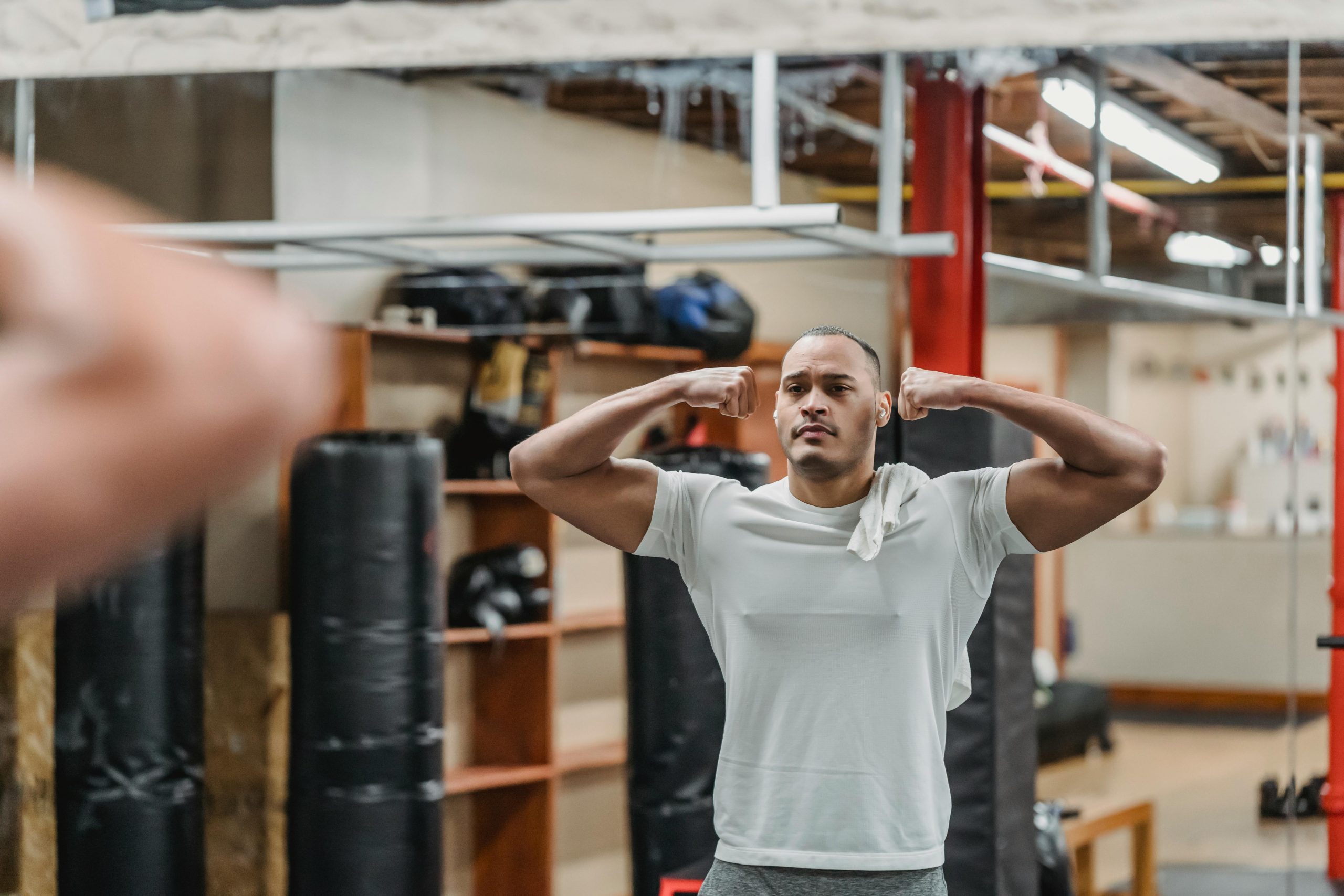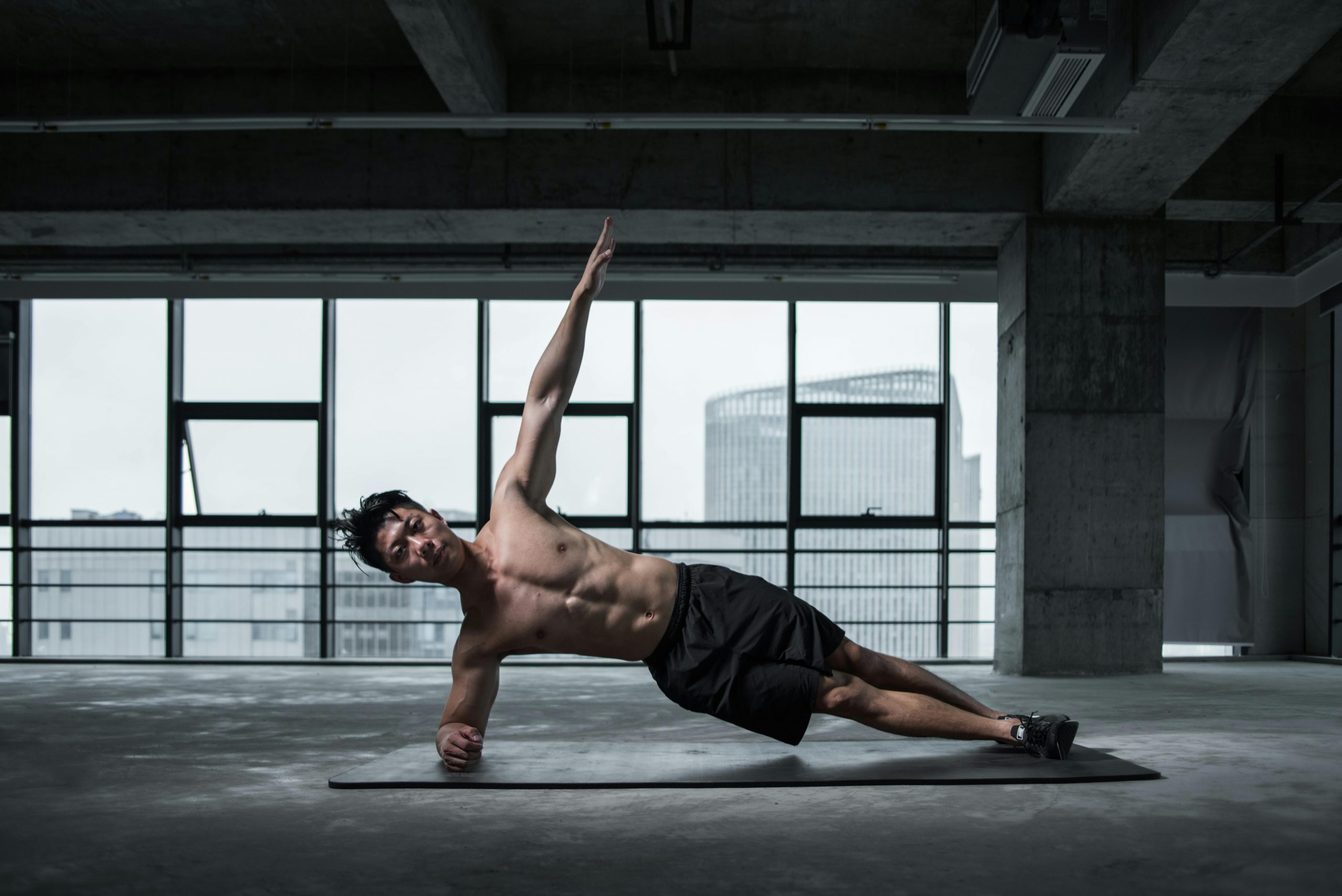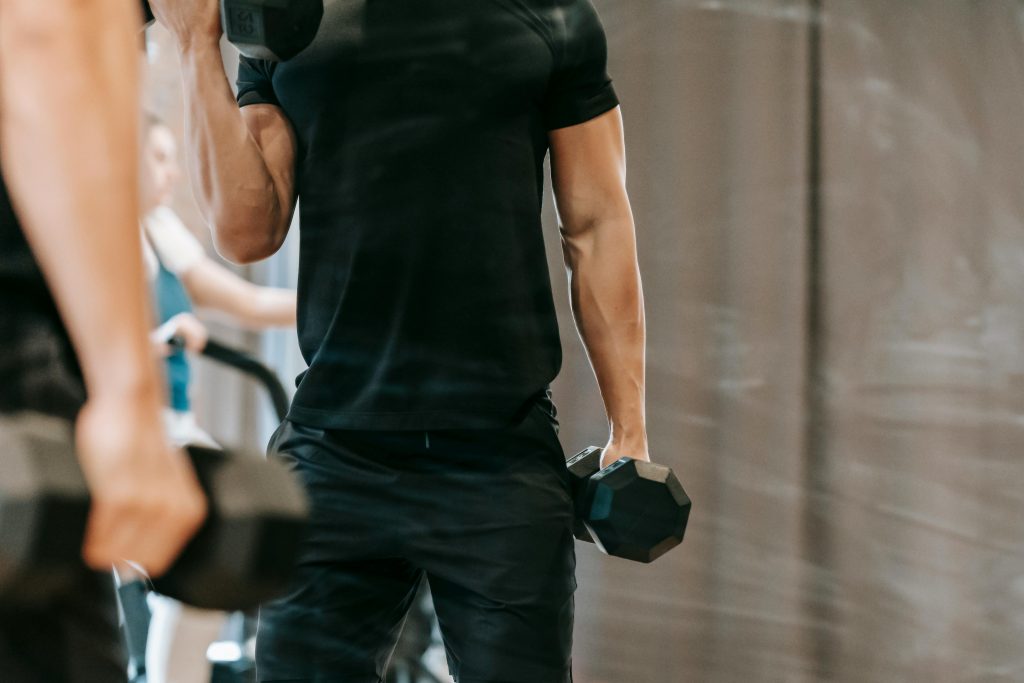If you’re new to the gym, it’s normal to wonder if your hard work is paying off. You’re hitting the weights, eating cleaner, maybe even cutting back on the beers—but how do you know if you’re gaining muscle and losing fat?
Spoiler: the scale isn’t the only thing you should be checking.
Let’s break down the clearest signs that your body is changing for the better—even if you’re not seeing six-pack abs just yet.
- 1. Are Your Clothes Fitting Differently?
- 2. Do You Look More Defined in the Mirror?
- 3. Are You Getting Stronger in the Gym?
- 4. Do You Have Better Energy Throughout the Day?
- 5. Has Your Posture Improved?
- 6. Are You Sleeping Better?
- 7. Has Your Body Fat Percentage Changed?
- 8. Are People Noticing?
- 9. Your Recovery Time is Faster
- 10. Are Your Workouts Feeling Easier—or Are You Pushing Harder?
- A Quick Word About the Scale
- Recap: Top Signs You’re Gaining Muscle and Losing Fat
- Final Thoughts: Keep Showing Up
1. Are Your Clothes Fitting Differently?
You might not lose a ton of weight on the scale at first—but that doesn’t mean you’re not making progress. As you gain muscle and lose fat, your body composition changes.
Look for:
- Shirts feeling tighter around the chest, shoulders, and arms
- Pants feeling looser around the waist
- A more defined “V-shape” starting to show in the upper body
Muscle is denser than fat. So even if the number on the scale stays the same (or even goes up slightly), your clothes may tell a very different—and more accurate—story.
2. Do You Look More Defined in the Mirror?

Forget the scale for a minute. Your mirror can be one of the most powerful tools for tracking progress.
When you lose fat and build muscle at the same time, your physique starts to look more “chiseled.” This isn’t about being shredded—it’s about increased definition. If you’ve been wondering how to lose fat without losing muscle, improved muscle tone and visible shape are some of the clearest signs you’re doing it right.
What to watch for:
- More visible shoulder and arm muscles
- Slight outlines of abs or obliques
- A tighter jawline or reduced puffiness in the face
Try taking progress photos once a week under the same lighting. You might be surprised at how quickly subtle changes add up.
3. Are You Getting Stronger in the Gym?
This one’s big.
If you’re lifting heavier weights, doing more reps, or noticing that exercises feel easier than they did a few weeks ago, that’s a clear sign of muscle growth.
Strength improvements often show up as:
- Adding weight to your compound lifts (bench, squat, deadlift)
- Pushing out more reps at the same weight
- Needing less rest between sets
- Recovering faster after workouts
Muscle gain isn’t just about looks—it’s about performance. If you’re stronger now than you were last month, you’re on the right track.
4. Do You Have Better Energy Throughout the Day?
As you build muscle and lose fat, your metabolism becomes more efficient. You’ll likely notice an increase in energy, focus, and stamina—not just at the gym, but in daily life.
Signs include:
- Waking up more refreshed
- Needing fewer energy drinks or caffeine boosts
- Feeling more alert throughout the day
- Not crashing as hard in the afternoon
Muscle tissue requires more energy to maintain than fat does, so gaining lean mass means your body starts burning calories more effectively—even at rest.
5. Has Your Posture Improved?
This is one of the less obvious—but super important—signs of progress.
Many beginners start with weak posterior chains (back, glutes, hamstrings) and tight hip flexors from sitting too much. But as you strengthen key muscles and stretch more, your posture starts to straighten out.
You may notice:
- Standing taller without slouching
- Less back or neck discomfort
- More confidence in your walk and stance
Improved posture not only makes you look better—it helps you lift better and avoid injury.
6. Are You Sleeping Better?
Quality sleep is a game-changer, and your fitness progress might be helping you get more of it.
As you work out consistently and burn off stress, you’ll likely notice deeper, more restful sleep.
Sleep improvements may include:
- Falling asleep faster
- Waking up fewer times during the night
- Feeling less groggy in the morning
Better sleep helps muscle recovery and fat loss, so it becomes a positive feedback loop. You work out, sleep better, recover faster, and get even better results.
7. Has Your Body Fat Percentage Changed?
Even if you can’t see shredded abs yet, there are small cues that your body fat is dropping.
These might include:
- Less love handle volume
- More visible veins on your forearms or biceps (called “vascularity”)
- Your face leaning out (hello, jawline)
If you want something more objective, you can try:
- Using calipers for body fat measurement
- Investing in a smart scale that measures body composition (note: not always super accurate, but good for trends)
- Booking a DEXA scan for a precise body fat reading
8. Are People Noticing?
Sometimes the biggest indicator is what others are saying.
You may not see every change in yourself, but people around you probably will.
Common comments you might hear:
- “Have you been working out?”
- “You look bigger—but leaner.”
- “Something’s different—you look stronger.”
If people start giving unsolicited compliments, chances are your hard work is showing.
9. Your Recovery Time is Faster
When you’re new to training, your body is adjusting to new stress. In the beginning, you might feel sore for days. But as you gain muscle and adapt, recovery improves.
Signs include:
- Less soreness after the same workout
- Feeling ready to hit the gym sooner
- Needing fewer rest days
This doesn’t mean you’re not working hard—it just means your body is adapting and growing.
10. Are Your Workouts Feeling Easier—or Are You Pushing Harder?

Once you’ve been consistent for a few weeks, you’ll notice you’re moving with more purpose.
Watch for:
- Better form during lifts
- More control in movements
- A higher tolerance for high-intensity work
This is where the magic starts to happen. As you gain muscle, your nervous system becomes more efficient. Your body feels more coordinated, and everything starts to “click.”
A Quick Word About the Scale
The number on the scale isn’t the best progress tracker—especially early on.
Why? Because:
- Muscle weighs more than fat
- Water retention can skew numbers
- Fat loss might be masked by initial muscle gain
Instead, use the scale as one data point alongside:
- How your clothes fit
- How you look
- How you feel
- Your strength in the gym
Recap: Top Signs You’re Gaining Muscle and Losing Fat
Here’s a quick rundown of what to look out for:
- Clothes fit differently (tighter in the right places, looser in others)
- More definition in the mirror
- Lifting heavier or more reps
- Better energy throughout the day
- Improved posture and confidence
- Deeper, more restful sleep
- Reduced body fat signs (leaner face, more vascularity)
- Compliments from others
- Faster recovery between workouts
- Better control and performance in training
Final Thoughts: Keep Showing Up
If you’re new to fitness, it’s easy to get discouraged if you don’t see instant results. But here’s the truth: real change takes time. And the early signs—like the ones above—often come before the dramatic transformations.
So don’t obsess over the scale. Watch for these signs, track your workouts, eat to support your goals, and stay consistent.
Your body is changing, even if it’s not shouting it from the rooftops yet.
Keep going—you’re just getting started




